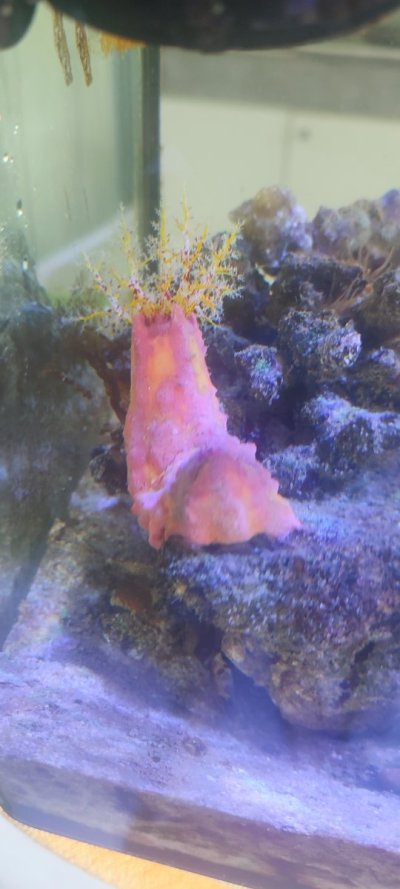I'm currently in the process of setting up my first saltwater tank, a 75-gallon, and I've been doing research on what specifically I wanted to keep for about the last month. I find myself drawn to NPS corals like sun coral, gorgonians, and chili coral, as well as filter-feeding inverts like feather dusters and sponges. I'm aware that most of the species in this category are not recommended for beginners, with a decent portion being considered expert only, so I'm here to ask for any advice on how to set myself up for success in designing an NPS-dominated system as a beginner.
I had planned to start with some photosynthetic LPS corals while I learned the ropes, and set up a system with lower flow near the top for the LPS and stronger at the bottom for NPS and filters, but I worry that the aggressiveness of many LPS corals would cause me some issues, both because I would also like to keep lots of non-filter inverts, mainly shrimp, urchins, and sea slugs/cucumbers/nudibranch, and a clam, which could be hurt by the tentacles, and because a 75-gallon tank limits my space a bit more than I'd like.
I also considered going for a high-flow all-round system with some SPS near the top since that's typically what they prefer, but being so new I doubt my ability to balance nutrient and mineral levels such that the excess food required by filter feeders didn't kill the SPS through water quality and the SPS didn't suck up all my alkalinity and calcium, starving out my NPS. I also worry that flow that high would negatively impact the inverts I mentioned earlier.
,
any advice on how to set up a system like this or how to stay focused on what I'm most interested in without jumping in too far into the deep end and just killing a bunch of coral would be greatly appreciated.
I had planned to start with some photosynthetic LPS corals while I learned the ropes, and set up a system with lower flow near the top for the LPS and stronger at the bottom for NPS and filters, but I worry that the aggressiveness of many LPS corals would cause me some issues, both because I would also like to keep lots of non-filter inverts, mainly shrimp, urchins, and sea slugs/cucumbers/nudibranch, and a clam, which could be hurt by the tentacles, and because a 75-gallon tank limits my space a bit more than I'd like.
I also considered going for a high-flow all-round system with some SPS near the top since that's typically what they prefer, but being so new I doubt my ability to balance nutrient and mineral levels such that the excess food required by filter feeders didn't kill the SPS through water quality and the SPS didn't suck up all my alkalinity and calcium, starving out my NPS. I also worry that flow that high would negatively impact the inverts I mentioned earlier.
,
any advice on how to set up a system like this or how to stay focused on what I'm most interested in without jumping in too far into the deep end and just killing a bunch of coral would be greatly appreciated.






















